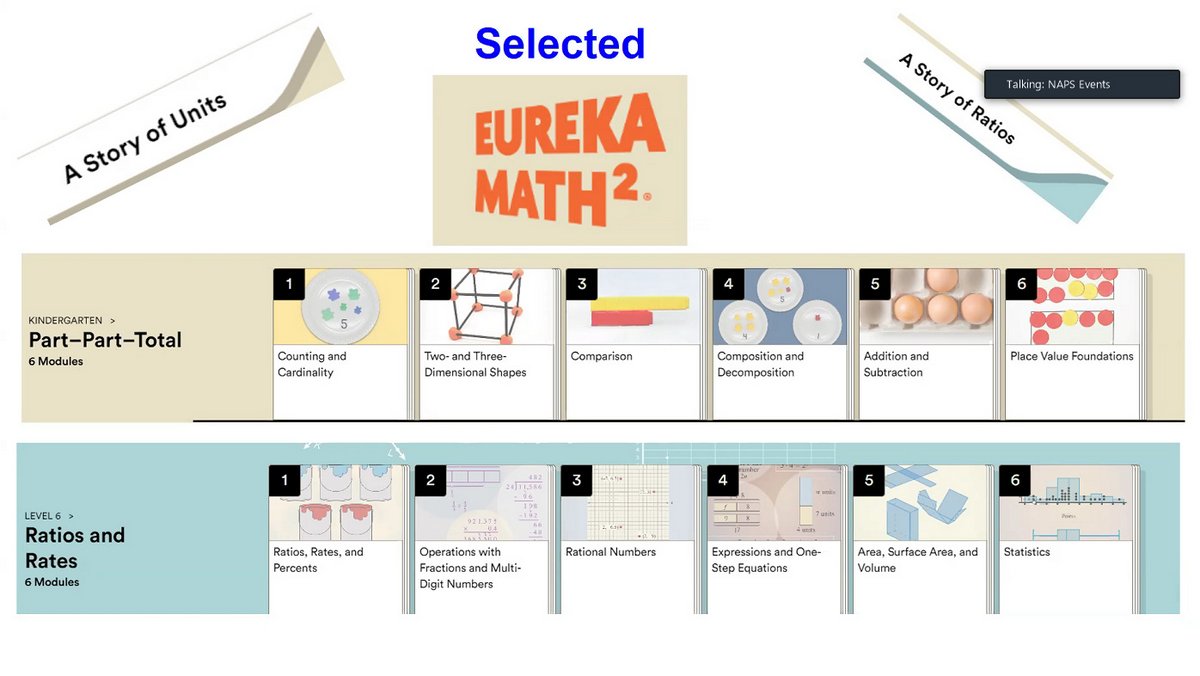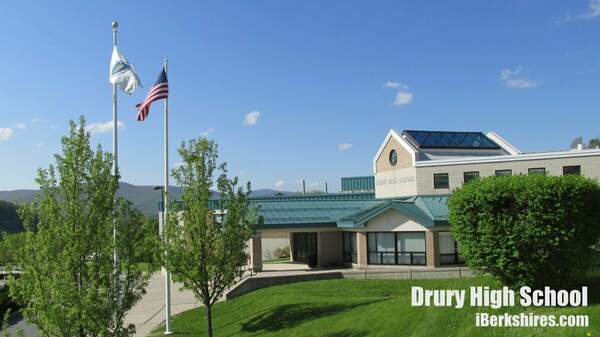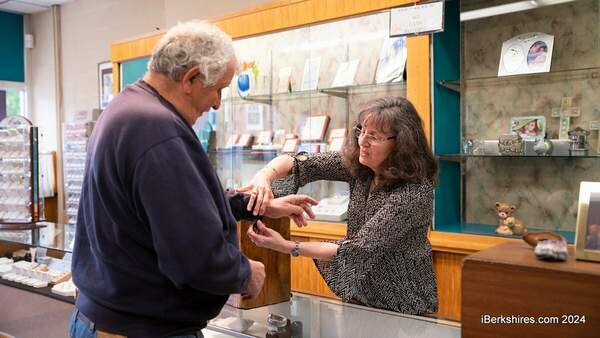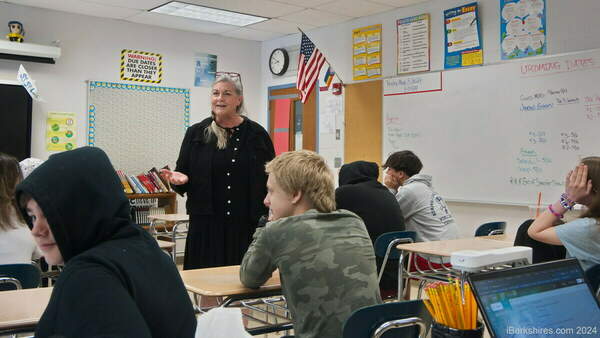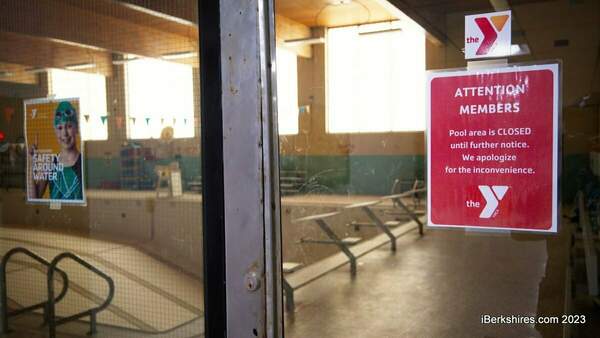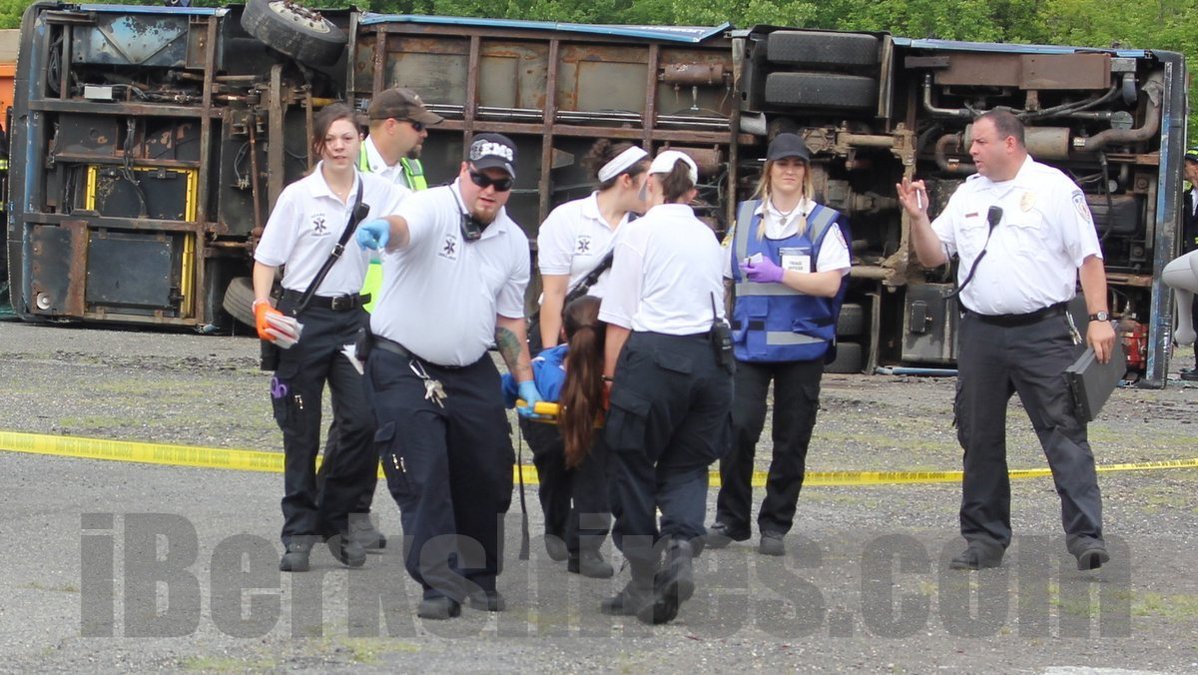
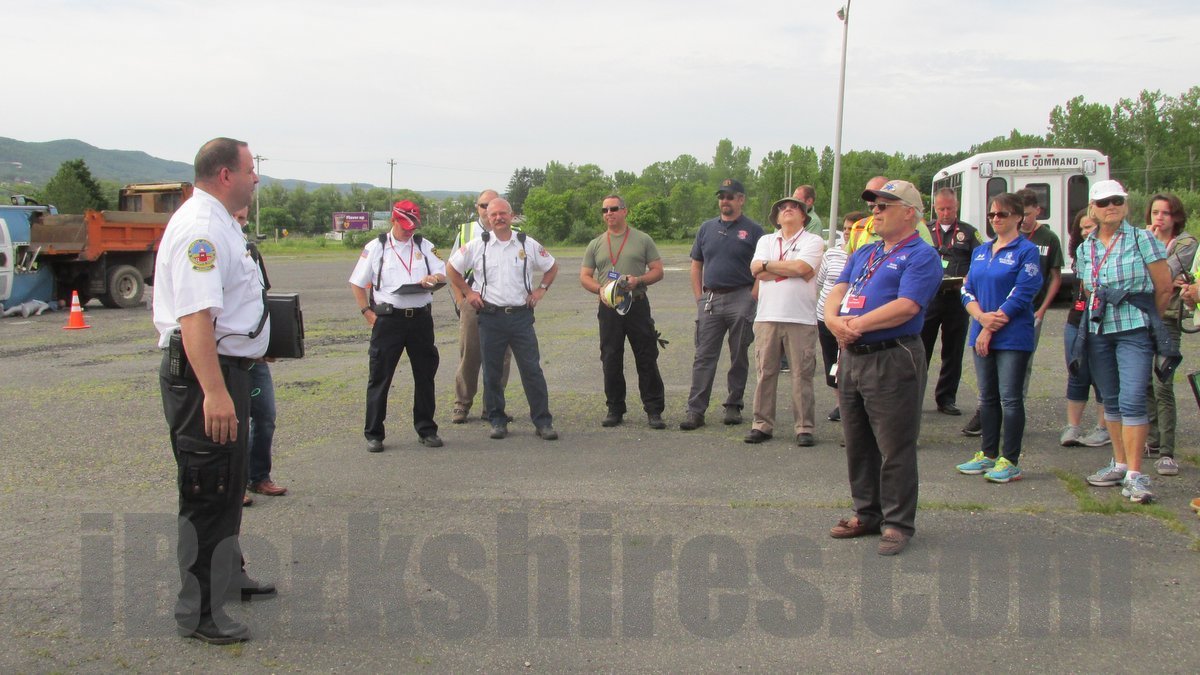
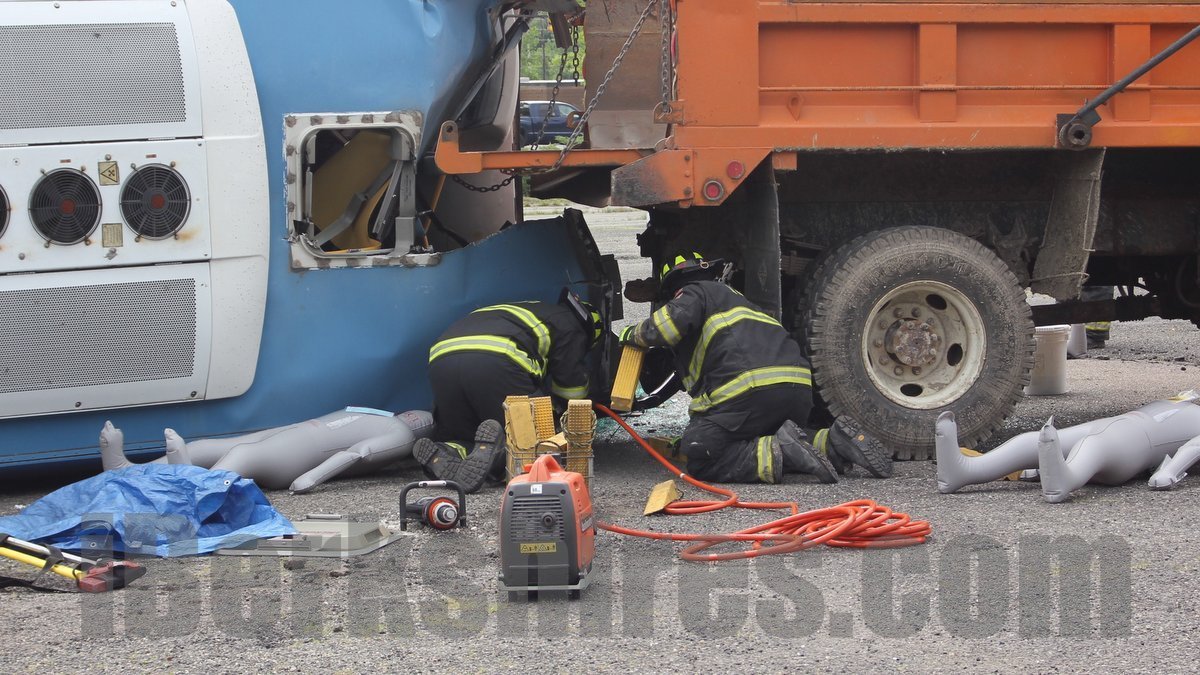
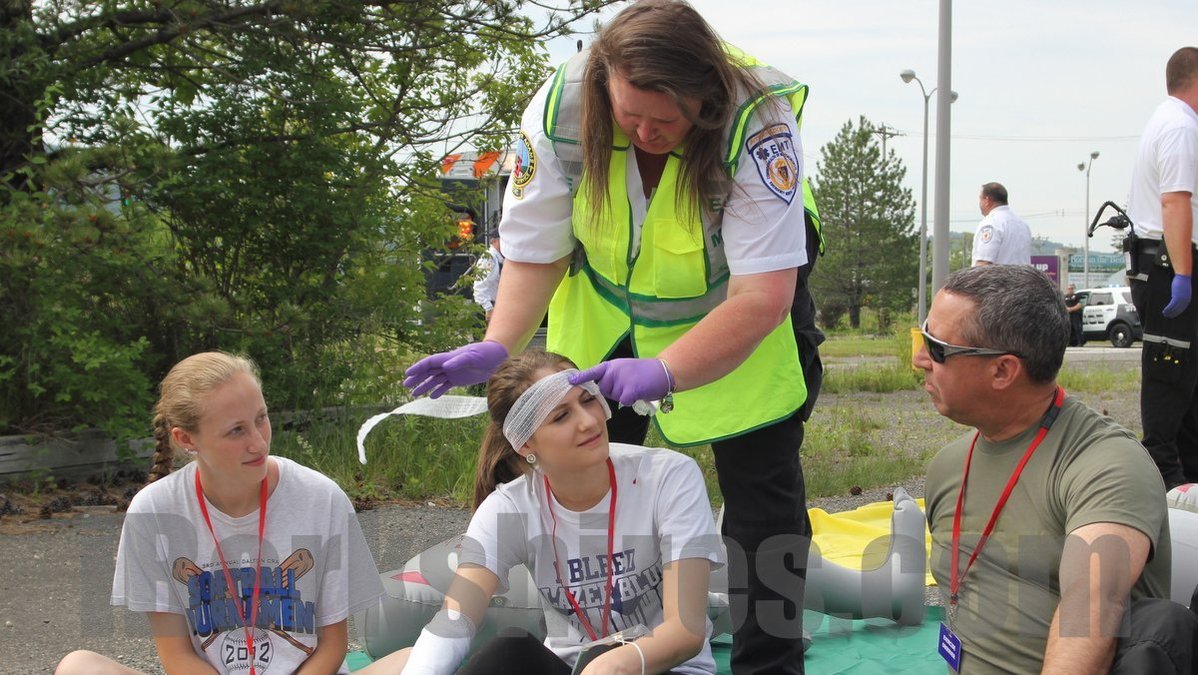
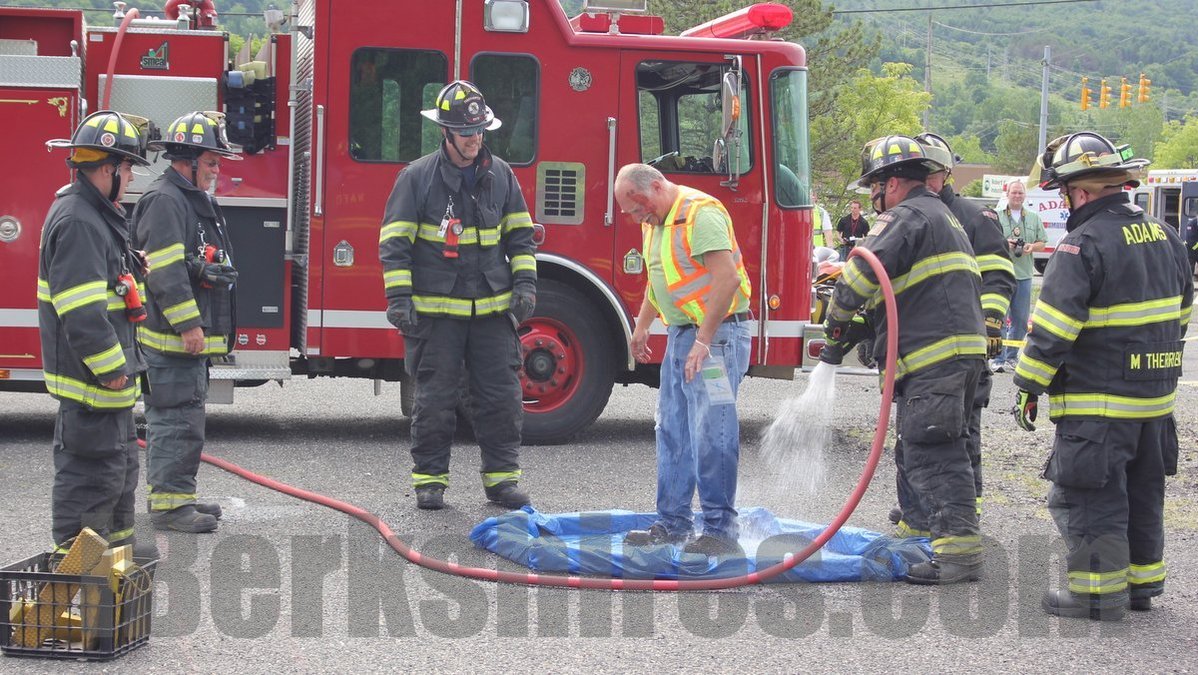
North Berkshire Mass Casualty Drill Tests Emergency Plans
.JPG)
NORTH ADAMS, Mass. — The call came in shortly after 9 a.m. Thursday: collision of a bus full of Drury High School students and a city truck, multiple casualties.
Most accidents happen in seconds and emergency responders are on the scene in minutes. But this particular accident took nearly two years to come to fruition.
More than 60 people, 40 of the first-responders, were on the scene for the mass casualty incident drill being hosted by the Northern Berkshire Emergency Planning Committee at the former North Adams Plaza on Curran Highway.
"There's going to be a lot of activity, emergency responders will be coming in hot with lights and sirens," cautioned Amalio Jusino, assistant chief of the North Adams Ambulance Service and coordinator of the drill, early Thursday morning.
Behind him, an obsolete bus donated by the Berkshire Regional Transit Authority was flipped on its side and pushed into the back of a big Department of Public Works dump truck. Gray blow-up medical dolls were scattered around the site and the bus driver, a more complex mannequin, lay crushed under the bus.
Real-life "victims" were painted up to indicate bleeding and bruising and instructed on their positions. A cadre of observers, evaluators, safety officers and controllers took up positions to document the exercise.
This drill had moved from table-top exercise, to limited training with many of the same participants to full-scale activation. While the first-responders had participated in past drills focusing on hazardous materials, accidents and live shooter, this one was integrating yet another element: reunification.
Incidents particulary involving children add a further layer of contacting parents and getting families back together.
"We know how to respond to a motor vehicle accident, we know how to decon, we know how to transport people to the hospital, where we're failing, though, if it's a bus and we have 20 students that aren't injured, how do we get that reunification to occur?" said Jusino. "Parents showing up, vehicles showing up, how do we manage that scene? So really today's objective is to practice that reunification."
Much of that was done offsite with Drury High School as the gathering point for "students" who could be released from the scene. A representative from the public schools was also on hand for coordination.
It was important, said Jusino, to get people accustomed to procedures in the case of such incidents. Each agency has its own decision-making process that is integrated into the emergency planning process. Drury has a good reunification plan so in this case, the school was notified, a bus supplied and uninjured students taken directly the school.
The committee is also working to develop swift communications to the general public, primarily through its Facebook page.
"Our plan is to get a notification out on our site in the first 15 minutes of any event," he said, but he and Police Sgt. James Burdick noted that it was difficult to control information once it gets out on social media or "scannerland."
But reunification was only one part of the complex drill, which began with the first responder, a police officer, notifying dispatch. From there, North Adams and Adams firefighting units and North Adams, Adams and Village ambulances began to arrive on scene; Berkshire Medical Center was notified, activating MCI protocols at the main and North Adams campuses and bringing County and Action ambulances and Pittsfield Police into the pool.
BMC makes determinations of where patients are taken based on communications with other hospitals and triage at the scene, with patients coded Green, Yellow, Red, with red being the most critical.
"We can't send 25 red critical patients to Berkshire Medical Center ... why would we tax that system?" Jusino said.
Tarps in the different colors, including White for dismissal and Black for death, were laid out near the scene and patients escorted or carried to the appropriate color.
Firefighters worked at the bus to the free the driver by lifting the vehicle and pulling him out. The dummy, unfortunately, did not survive nor did another passenger.
The driver of the truck (DPW worker Bruce Richards) was able to walk but was both injured and doused in diesel fuel, initiating the hazmat part of the drill. He was taken by firefighters to small tarp "pool" and hosed off (or at least just his boots) before being attended to.
Jusino said the declaring an MCI, determined by having more patients than immediately available ambulances, allows more flexibility on treatment.
"Normally, I wouldn't keep a patient sitting on a tarp for 45 minutes, however, if they're not a critical patient and they're able to do that, then we'll do that," he said. "We transport the critical."
Eleonora Giavazzi and Elizabeth Bona played two of the victims, one yellow, one green.
"I was the Italian girl," said Giavazzi, an exchange student from Italy who has been staying with Bona's family while attending Drury. Though she speaks very good English, her role had her speaking only Italian as a challenge to the emergency medical technicians. "I felt bad for them because they couldn't understand. It was really hard for them to figure out."
Bona, also from Drury, said it was hard because she didn't really have a back story to tell the EMTs about what happened. If it had been real, she said, "I probably would have been more like freaking out."
Giavazzi said she learned she should be calm and patient "because everything is going to be good"; Bona, that if she is ever in an accident, to give the EMTs more information.
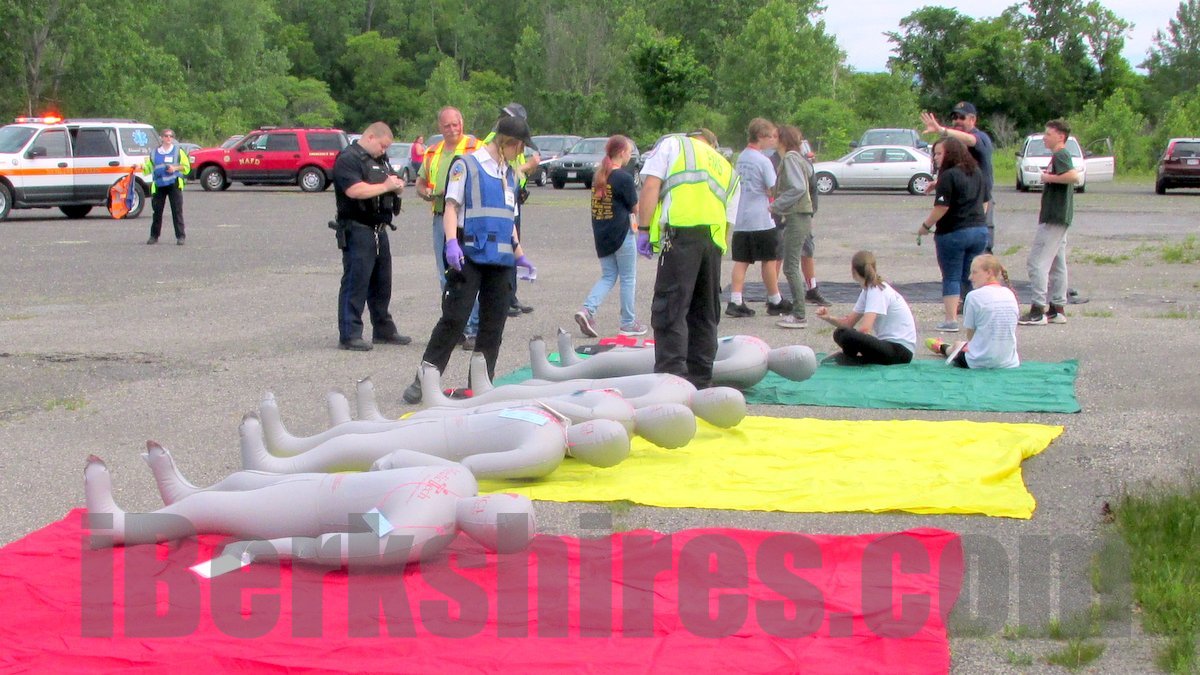
There's a lot going on beyond the scene. Burdick described the drill as a snowball rolling down a hill, getting bigger as more agencies become involved.
For the police, it's a two-car accident that has to be contained in terms of evidence; that means other law enforcement agencies such as the state police Collision Analysis and Reconstruction Section. Rerouting traffic may involve calling in other police units from neighboring towns. At least eight agencies were involved on the police side.
Overall, Jusino said he was pleased with how the operation had unfolded although there were some problems. Those will be brought up in hotwash briefing and detailed in the action plans for correction.
"We have issues today, I know it. I already see it. We have new employees. Look at North Adams Ambulance alone, we had maybe 30 employees when the hospital closed and now we have 59 employees," he said. "We have a whole bunch of new faces that have never drilled with us before. We have communication issues, we have complexities in terms of transport decisions, we have who's in charge?"
The Rev. David Anderson, pastor of First Baptist Church and Fire Department chaplain, was also on hand to calm "victims" and offer support for first-responders. Burdick and Jusino said it was important for personnel overwhelmed by a crisis to step back and get some support.
"We deal with acute stress and we want them to tell us," said Jusino. If this had been a real incident, the critical response team would have been called in to provide emotional support.
"I've been here a long time. I've been to a number of mass casualty incidents in real life," said Burdick. "Some of our officers here today, this is their first training for a hazardous incident. They were very nervous ... you have to boil it down to this, 'as bad as this is, it's a two-car accident.' ... This is how you give them the taste so they know how to handle it when it's the real deal."
Tags: ambulance service, emergency committee, emergency drill, fire department, police,

